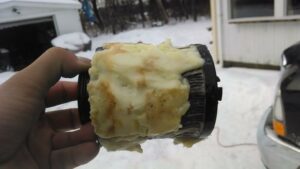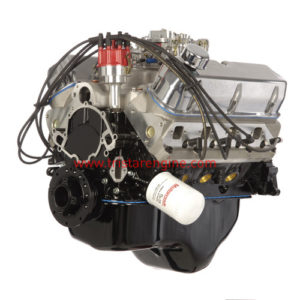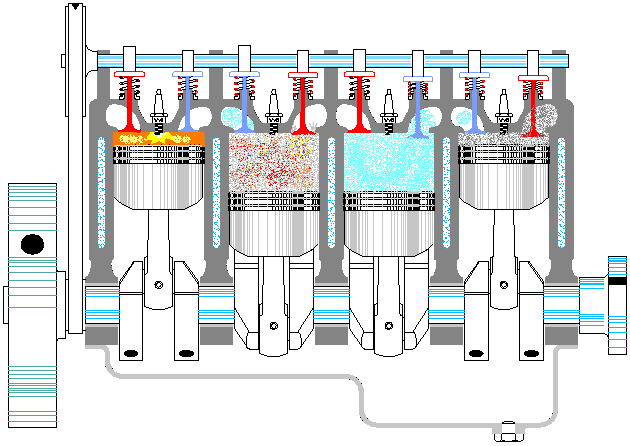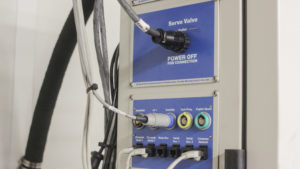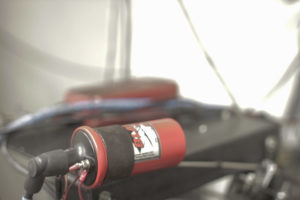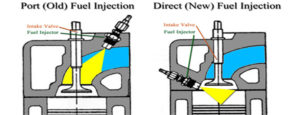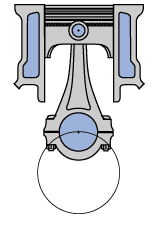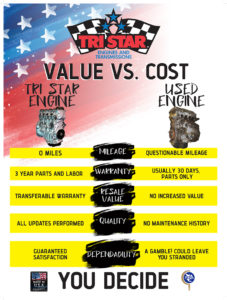Our freight services are experiencing some interruptions due to the record breaking temperatures this Winter, and these ice cold problems are not uncommon with diesel engines.
Winter comes with all sorts of automotive and engine based risks. From the slipping and sliding on that "this is nothing!" level of snow to the huge amounts of corrosive salt dumped. With all of these risks there stands a much more specific, and nefarious card up father winters sleeve: when diesel fuel starts to gel.
Too late for your engine? Tri Star Engines is here to help with all your diesel engine needs. Send us a quote request for your diesel now!
DIESEL FUEL GELLING
Diesel engine owners, and big rig drivers everywhere are a perfect target for this and will have to be wary, especially with the record temperatures we're getting here in the Midwest!
What is it?
Diesel gelling is a unique issue where the paraffin (a waxy liquid made from petroleum) starts to solidify due to the extreme cold. It begins to crystallize at near freezing, or 32 degrees Fahrenheit. This leads to sluggish feeds and overall poor performance. But that's just the beginning. Starting around 15 degrees Fahrenheit it begins to freeze up and become a thick gel like material. Think of the stuff you see 1950's movie bad boys jamming their hair full of. This leads to it clogging and clouding the fuel lines, and tank itself. Eventually causing the engine to stall up, and refuse to run. This gel is especially annoying as it wont go away just by heating the engine up a little bit. It will have to reach it's full melting point before it begins to run efficiently again.
Signs of diesel gelling
One of the most obvious, and common signs is the engine refusing to start. This is caused by the fuel lines being so thick with gel that they are unable to flow. On top of refusing to start, you may also begin to encounter reduced performance. Chugging, or slow acceleration are very common. This is due to a difference in the desired fuel rail pressure and what the actual rail pressure is when accelerating. This pressure difference is once again due to the fuel being stuck, and unable to be pushed through the system.
Prevention
Now that you know your enemy, you can truly defeat him.
Or at least prevent it!
You are probably thinking the best defense is a good offense, or at least to keep your engine running while idle. But this is actually one of the worst options long term. It doesn't just burn fuel, it can also tear up your engine over time and lead to unnecessary damages. It also creates quite a large amount of emissions.
There are multiple fuel additives you can use to keep your lines flowing. Most work as a preventative, but you can always add more in an attempt to save an already gelled engine.
There are also multiple filter types you can install to help break up gelling and prevent it in fuel lines. Your local shop can help you out with their selection.
As a final measure you can add a little kerosene to your diesel mix. A premixed formula is recommended to avoid any incidents. Most gas stations in cold weather climate areas offer winter ready diesel fuel which should be used when the temperature starts to drop.
All three of these defenses are suggested, but a combination of all three is going to be your best bet. Make sure you are well prepared before you go into any cold regions!

Emergencies
If you missed this article until your lines were already frozen, or you drove into a scene out of "The Day After Tomorrow". You are not out of luck quite yet (well, hopefully!).
There are thawing agents, and anti gelling formulas that start acting right away. These can still take close to an hour to fully thaw and remove the water from your lines. But are the quickest option if you're already frozen solid. They should be used as an emergency and not as a preventative.
Tri Star Engines offers a wide variety of expertly re manufactured diesel engines. Cuddle up with a diesel engine from Tri Star Engines and ride out this polar vortex!
Continue Reading


